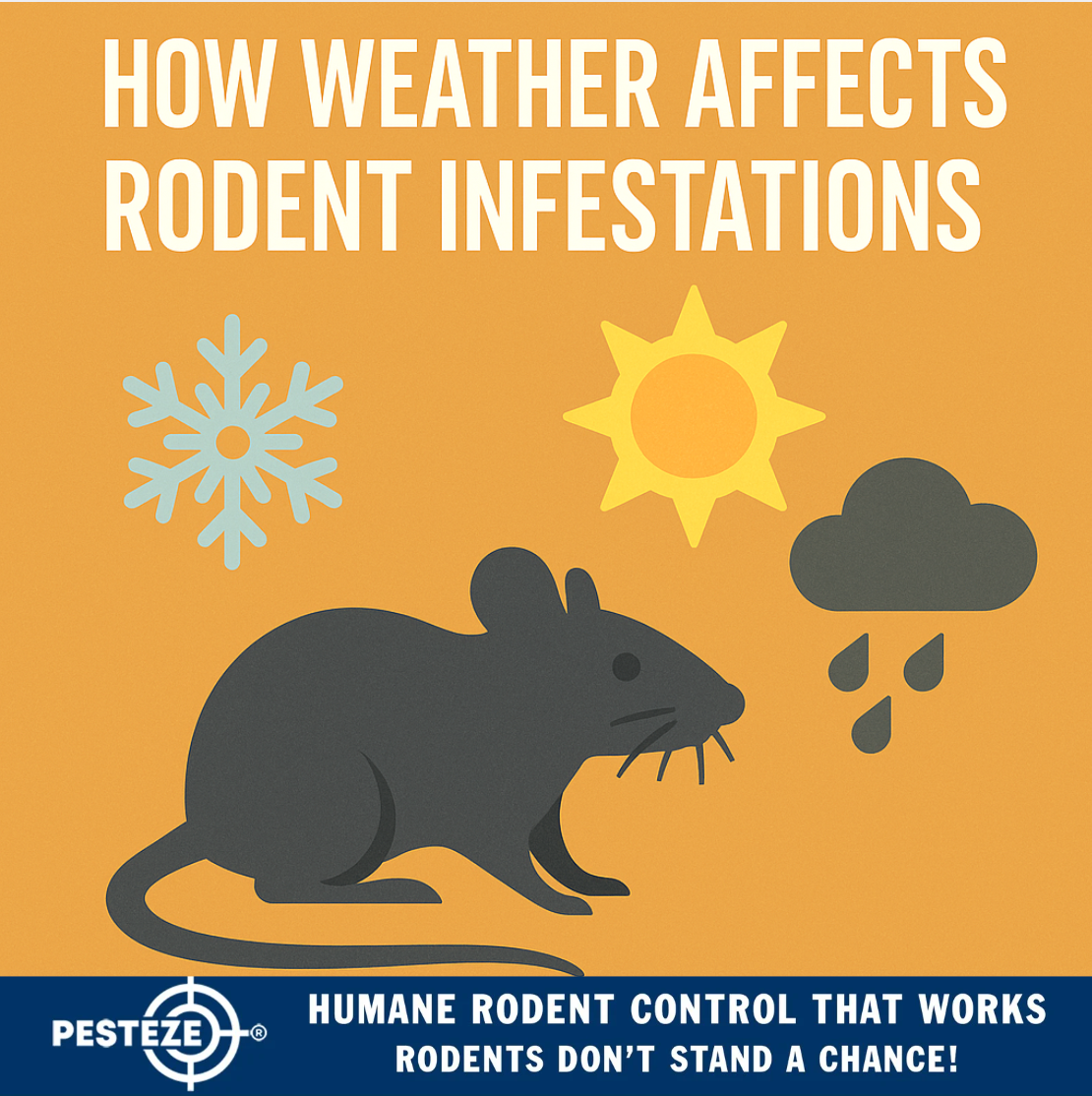HOW WEATHER AFFECTS RODENT INFESTATIONS

HOW WEATHER AFFECTS RODENT INFESTATIONS
SUMMARY
Weather plays a major role in rodent activity, influencing when and why infestations occur. This guide explains how seasonal changes, temperature shifts, and storms affect rodent behavior and what you can do to prepare your home.
FEATURES
-
Cold Weather Migration: Rodents move indoors during winter.
-
Hot Weather Stress: Heat drives rodents to seek water and shade.
-
Rain & Flooding: Heavy rains displace rodents from burrows.
-
Storm Damage: Broken structures create new entry points.
-
Seasonal Food Sources: Shifts in nature impact rodent foraging.
-
Proactive Prevention: Seasonal checks and repairs reduce risks.
DESCRIPTION
Rodent infestations don’t happen randomly—they’re often tied to changing weather patterns. As conditions outdoors shift, rodents adapt their behavior to survive, which frequently leads to infestations inside homes, businesses, and other buildings. By understanding these weather-driven patterns, you can anticipate rodent problems and protect your property year-round.
In cold weather, rodents move indoors in search of warmth and shelter. Winter creates ideal conditions for infestations as attics, basements, and wall voids offer insulation and safety from predators. This seasonal migration explains why many homeowners notice spikes in activity during late fall and winter.
Hot weather brings its own challenges. Rodents struggle with heat stress and dehydration, so they often move closer to water sources like kitchens, bathrooms, and leaky pipes. Garages and shaded storage areas also become prime hiding spots when outdoor temperatures soar.
Rain and flooding are other key triggers. Burrows can quickly become waterlogged, forcing rodents to relocate to higher, drier ground—often inside human structures. After heavy storms, infestations frequently increase in basements, crawl spaces, and garages.
Storm damage further worsens the problem. High winds, fallen branches, and structural damage create new gaps and cracks for rodents to exploit. A house that was once secure may suddenly have multiple vulnerable entry points after a severe weather event.
Seasonal food availability also drives rodent behavior. In autumn, when natural food sources decline, rodents are more likely to seek human food indoors. Conversely, in spring and summer, gardens, fruit trees, and outdoor trash can draw rodents closer to homes.
The best defense is proactive prevention. Conduct seasonal inspections to seal cracks, repair storm damage, and check storage areas. Keep food stored securely, fix leaks promptly, and reduce clutter where rodents can nest. By staying one step ahead of weather-related changes, you can minimize the chances of rodents turning your home into their shelter.
- Saharsh Bansal


Comments 0